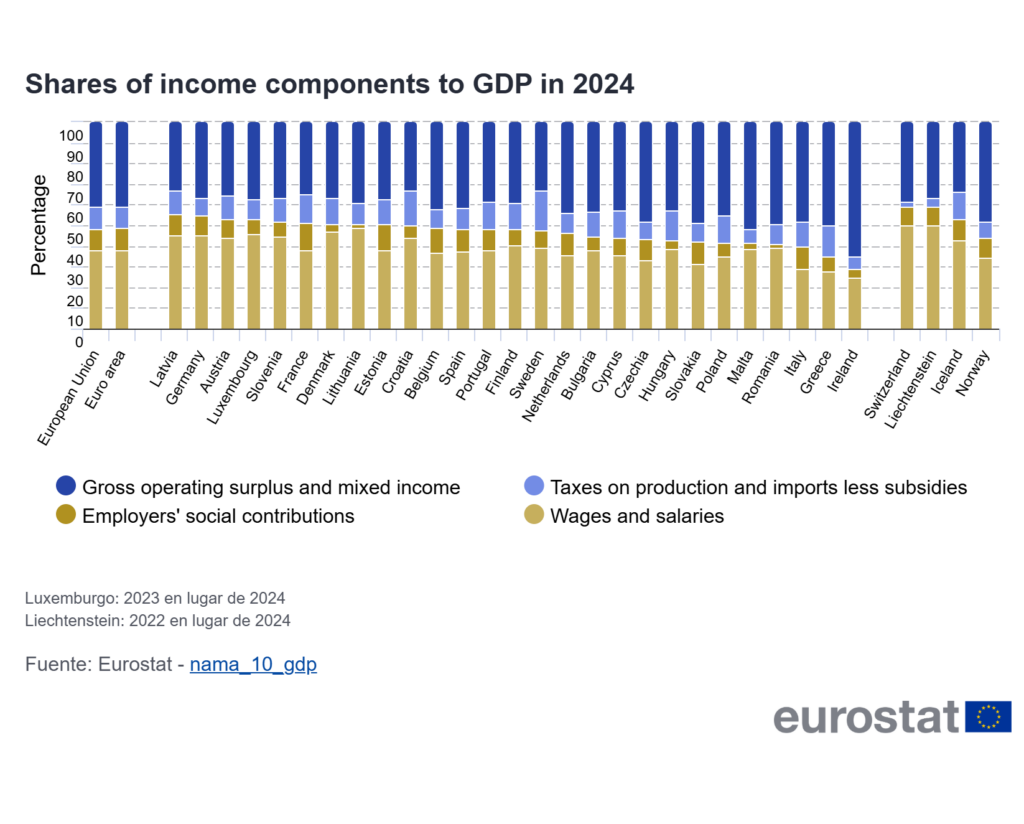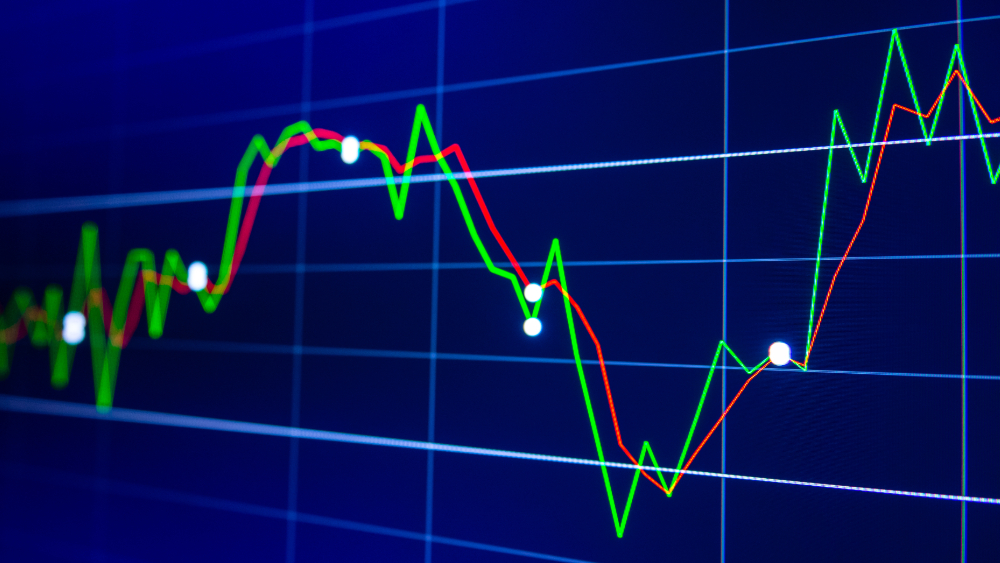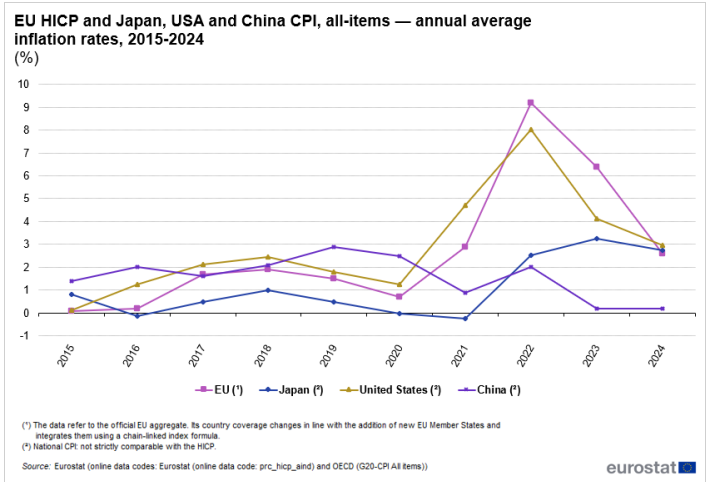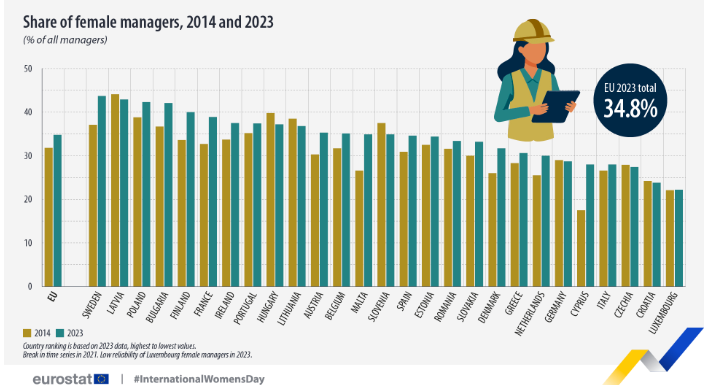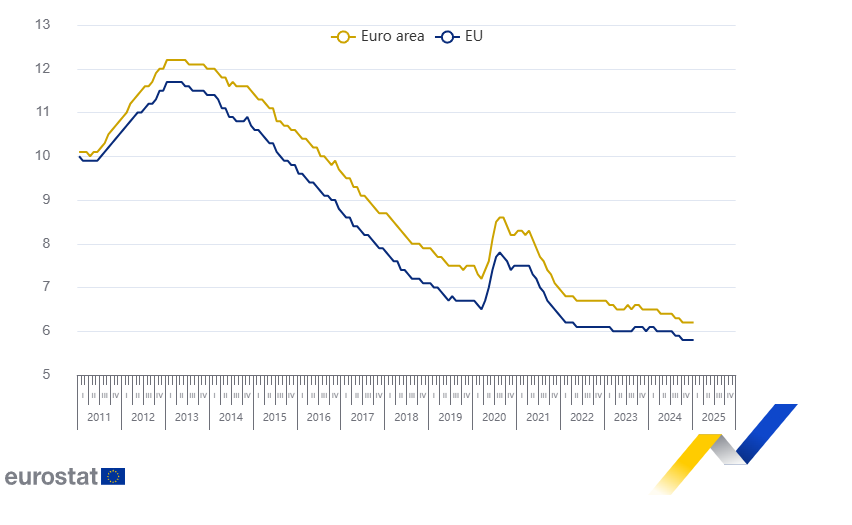Employee compensation reaches its highest share of the EU GDP in 2024
In 2024, employee compensation was the main component of income in the European Union (EU), accounting for 47.9% of GDP and 48.5% in the eurozone. This marked an increase of 0.9 and 0.8 percentage points (pp) respectively compared to 2023. Fourteen countries exceeded the EU average in this indicator, with Latvia (55.4%), Germany (54.5%), and […]
Employee compensation reaches its highest share of the EU GDP in 2024 Read More »
